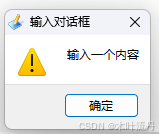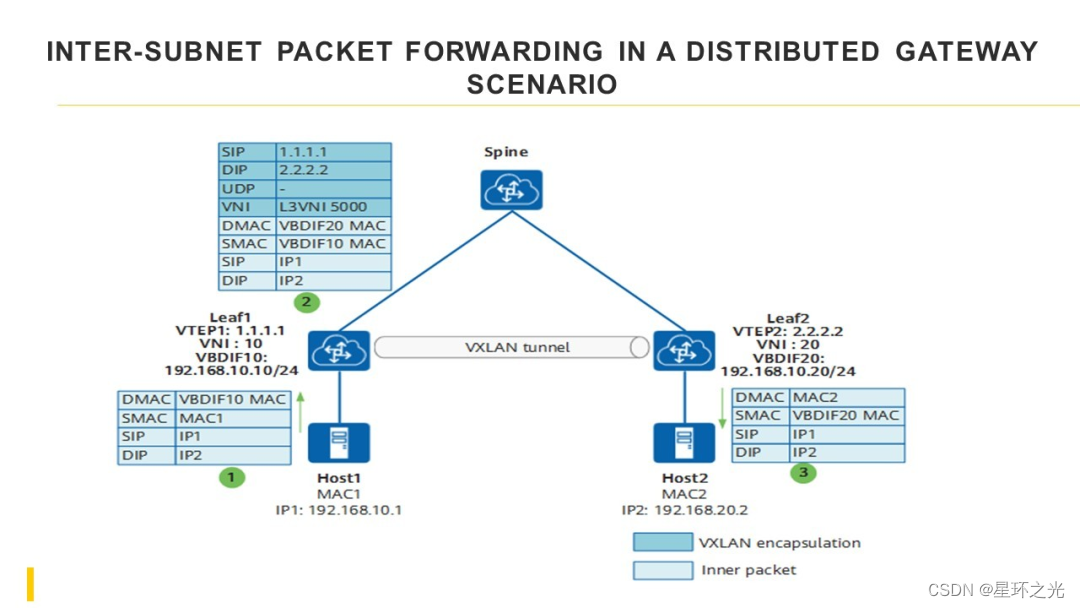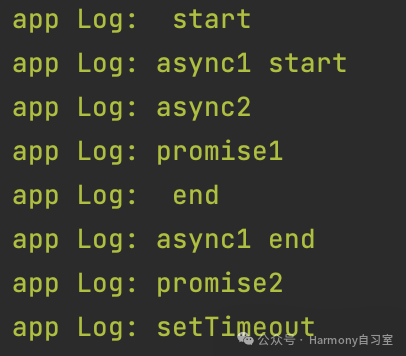
目录
- 一、【AIFI】混合编码器机制
- 1.1【AIFI】混合编码器介绍
- 1.2【AIFI】核心代码
- 二、添加【AIFI】机制
- 2.1STEP1
- 2.2STEP2
- 2.3STEP3
- 2.4STEP4
- 三、yaml文件与运行
- 3.1yaml文件
- 3.2运行成功截图
一、【AIFI】混合编码器机制
1.1【AIFI】混合编码器介绍

【AIFI】在论文中并没有结构图,让我们通过他的代码简单分析一下运行过程和优势
处理过程:
- 位置嵌入:
- 2D Sine-Cosine 位置嵌入(build_2d_sincos_position_embedding):
AIFI 模块首先为输入数据生成了 2D 的 sine-cosine 位置嵌入。这个嵌入机制类似于传统 Transformer 中的 positional encoding,用于补充序列中的位置信息,但在 AIFI 中,它针对二维图像结构,生成了与图像的宽度(w)和高度(h)相关的正弦和余弦嵌入。生成的位置嵌入在每个维度(w 和 h)分别通过 sine 和 cosine 函数来编码,通过交替使用 sin 和 cos,可以确保不同空间位置上的编码是唯一的。 - 输入特征的处理:
- 输入展平与转置:原始输入 x 的形状为 [batch_size, channels, height, width](即 [B, C, H, W])。在进入 Transformer 之前,AIFI 首先将输入展平并转置成 [B, HxW, C] 的形状,这符合 Transformer 的输入格式,转换后的形状将每个像素点的特征看作一个序列元素,并保持通道数为 C。
- 位置嵌入也生成一个 [HxW, C] 的嵌入矩阵,与展平后的特征一起输入到 Transformer 中。
- Transformer Encoder 层的应用:
- 多头自注意力 (MultiheadAttention):输入展平后的特征进入 MultiheadAttention 层,进行自注意力计算。AIFI 模块继承自 TransformerEncoderLayer,在该层中,首先通过 q 和 k 进行查询和键的相似度计算,然后加权 v(值)得到新的特征表示。位置嵌入在此步骤中帮助网络学习到空间信息,从而增强不同位置之间的关联性。
- 残差连接与前馈网络:在自注意力操作后,特征通过残差连接回输入特征,并经过一个两层前馈网络(Feedforward Network)进一步提升特征表达能力,最后通过 LayerNorm 和 Dropout 操作进行正则化和防止过拟合。
- 恢复形状:
- 还原维度:经过 Transformer 层处理后的特征,形状为 [B, HxW, C]。此时 AIFI 模块将其重新恢复到原始的 [B, C, H, W] 形状。这个步骤将序列形式的特征还原成二维的图像特征图,便于后续的卷积或其他图像处理操作。
AIFI 模块的优势:
-
二维位置嵌入的有效性:
AIFI 模块引入了二维的 sine-cosine 位置嵌入,它可以有效捕捉图像中的空间结构和位置信息。这种位置嵌入方式具有简单、高效的特点,同时能提供位置信息给 Transformer 模块,帮助自注意力机制更好地学习空间上的关联性。与传统的 Transformer 位置嵌入(主要是处理1D序列)相比,AIFI 中的 2D 位置嵌入更适合处理图像数据。 -
适应图像的序列建模:
通过将图像展平为二维序列,AIFI 模块能够将 Transformer 应用于图像特征中,这使得网络能够学习跨位置的长距离依赖关系。自注意力机制可以在整个图像范围内捕捉到全局信息,这对提升模型的感知能力和整体表现非常有帮助。 -
Transformer 的全局建模能力:
Transformer 的多头自注意力机制允许模型在不同位置之间建立全局依赖关系,这与传统的卷积网络只关注局部邻域不同。AIFI 的 Transformer 层能够有效整合图像中的全局特征,使得它在处理具有复杂上下文或长距离依赖的图像任务时非常有效。 -
灵活的残差连接与归一化策略:
AIFI 通过继承 TransformerEncoderLayer,使用了残差连接和 LayerNorm 归一化,这使得网络能够更深更稳定地训练,同时也避免了梯度消失问题。残差连接还可以保留原始输入特征,帮助网络平衡新旧特征。 -
高效计算与参数共享:
AIFI 通过使用 1x1 卷积和展平操作,使得整个模块在保持高效计算的同时,能够处理图像数据中潜在的上下文信息。通过位置编码和 Transformer 层的组合,AIFI 可以在不显著增加计算量的情况下获得较好的全局特征建模效果。
1.2【AIFI】核心代码
import torch
import torch.nn as nn
class TransformerEncoderLayer(nn.Module):
"""Defines a single layer of the transformer encoder."""
def __init__(self, c1, cm=2048, num_heads=8, dropout=0.0, act=nn.GELU(), normalize_before=False):
"""Initialize the TransformerEncoderLayer with specified parameters."""
super().__init__()
self.ma = nn.MultiheadAttention(c1, num_heads, dropout=dropout, batch_first=True)
# Implementation of Feedforward model
self.fc1 = nn.Linear(c1, cm)
self.fc2 = nn.Linear(cm, c1)
self.norm1 = nn.LayerNorm(c1)
self.norm2 = nn.LayerNorm(c1)
self.dropout = nn.Dropout(dropout)
self.dropout1 = nn.Dropout(dropout)
self.dropout2 = nn.Dropout(dropout)
self.act = act
self.normalize_before = normalize_before
@staticmethod
def with_pos_embed(tensor, pos=None):
"""Add position embeddings to the tensor if provided."""
return tensor if pos is None else tensor + pos
def forward_post(self, src, src_mask=None, src_key_padding_mask=None, pos=None):
"""Performs forward pass with post-normalization."""
q = k = self.with_pos_embed(src, pos)
src2 = self.ma(q, k, value=src, attn_mask=src_mask, key_padding_mask=src_key_padding_mask)[0]
src = src + self.dropout1(src2)
src = self.norm1(src)
src2 = self.fc2(self.dropout(self.act(self.fc1(src))))
src = src + self.dropout2(src2)
return self.norm2(src)
def forward_pre(self, src, src_mask=None, src_key_padding_mask=None, pos=None):
"""Performs forward pass with pre-normalization."""
src2 = self.norm1(src)
q = k = self.with_pos_embed(src2, pos)
src2 = self.ma(q, k, value=src2, attn_mask=src_mask, key_padding_mask=src_key_padding_mask)[0]
src = src + self.dropout1(src2)
src2 = self.norm2(src)
src2 = self.fc2(self.dropout(self.act(self.fc1(src2))))
return src + self.dropout2(src2)
def forward(self, src, src_mask=None, src_key_padding_mask=None, pos=None):
"""Forward propagates the input through the encoder module."""
if self.normalize_before:
return self.forward_pre(src, src_mask, src_key_padding_mask, pos)
return self.forward_post(src, src_mask, src_key_padding_mask, pos)
class AIFI(TransformerEncoderLayer):
"""Defines the AIFI transformer layer."""
def __init__(self, c1, cm=2048, num_heads=8, dropout=0, act=nn.GELU(), normalize_before=False):
"""Initialize the AIFI instance with specified parameters."""
super().__init__(c1, cm, num_heads, dropout, act, normalize_before)
def forward(self, x):
"""Forward pass for the AIFI transformer layer."""
c, h, w = x.shape[1:]
pos_embed = self.build_2d_sincos_position_embedding(w, h, c)
# Flatten [B, C, H, W] to [B, HxW, C]
x = super().forward(x.flatten(2).permute(0, 2, 1), pos=pos_embed.to(device=x.device, dtype=x.dtype))
return x.permute(0, 2, 1).view([-1, c, h, w]).contiguous()
@staticmethod
def build_2d_sincos_position_embedding(w, h, embed_dim=256, temperature=10000.0):
"""Builds 2D sine-cosine position embedding."""
grid_w = torch.arange(int(w), dtype=torch.float32)
grid_h = torch.arange(int(h), dtype=torch.float32)
grid_w, grid_h = torch.meshgrid(grid_w, grid_h, indexing='ij')
assert embed_dim % 4 == 0, \
'Embed dimension must be divisible by 4 for 2D sin-cos position embedding'
pos_dim = embed_dim // 4
omega = torch.arange(pos_dim, dtype=torch.float32) / pos_dim
omega = 1. / (temperature ** omega)
out_w = grid_w.flatten()[..., None] @ omega[None]
out_h = grid_h.flatten()[..., None] @ omega[None]
return torch.cat([torch.sin(out_w), torch.cos(out_w), torch.sin(out_h), torch.cos(out_h)], 1)[None]
二、添加【AIFI】机制
2.1STEP1
首先找到ultralytics/nn文件路径下新建一个Add-module的python文件包【这里注意一定是python文件包,新建后会自动生成_init_.py】,如果已经跟着我的教程建立过一次了可以省略此步骤,随后新建一个AIFI.py文件并将上文中提到的注意力机制的代码全部粘贴到此文件中,如下图所示
2.2STEP2
在STEP1中新建的_init_.py文件中导入增加改进模块的代码包如下图所示
2.3STEP3
找到ultralytics/nn文件夹中的task.py文件,在其中按照下图添加
2.4STEP4
定位到ultralytics/nn文件夹中的task.py文件中的def parse_model(d, ch, verbose=True): # model_dict, input_channels(3)函数添加如图代码,【如果不好定位可以直接ctrl+f搜索定位】

三、yaml文件与运行
3.1yaml文件
以下是添加【AIFI】机制在Backbone中的yaml文件,大家可以注释自行调节,效果以自己的数据集结果为准
# Ultralytics YOLO 🚀, AGPL-3.0 license
# YOLO11 object detection model with P3-P5 outputs. For Usage examples see https://docs.ultralytics.com/tasks/detect
# Parameters
nc: 80 # number of classes
scales: # model compound scaling constants, i.e. 'model=yolo11n.yaml' will call yolo11.yaml with scale 'n'
# [depth, width, max_channels]
n: [0.50, 0.25, 1024] # summary: 319 layers, 2624080 parameters, 2624064 gradients, 6.6 GFLOPs
s: [0.50, 0.50, 1024] # summary: 319 layers, 9458752 parameters, 9458736 gradients, 21.7 GFLOPs
m: [0.50, 1.00, 512] # summary: 409 layers, 20114688 parameters, 20114672 gradients, 68.5 GFLOPs
l: [1.00, 1.00, 512] # summary: 631 layers, 25372160 parameters, 25372144 gradients, 87.6 GFLOPs
x: [1.00, 1.50, 512] # summary: 631 layers, 56966176 parameters, 56966160 gradients, 196.0 GFLOPs
# YOLO11n backbone
backbone:
# [from, repeats, module, args]
- [-1, 1, Conv, [64, 3, 2]] # 0-P1/2
- [-1, 1, Conv, [128, 3, 2]] # 1-P2/4
- [-1, 2, C3k2, [256, False, 0.25]]
- [-1, 1, Conv, [256, 3, 2]] # 3-P3/8
- [-1, 2, C3k2, [512, False, 0.25]]
- [-1, 1, Conv, [512, 3, 2]] # 5-P4/16
- [-1, 2, C3k2, [512, True]]
- [-1, 1, Conv, [1024, 3, 2]] # 7-P5/32
- [-1, 2, C3k2, [1024, True]]
- [-1, 1, AIFI, [1024, 8]] # 9
- [-1, 2, C2PSA, [1024]] # 10
# YOLO11n head
head:
- [-1, 1, nn.Upsample, [None, 2, "nearest"]]
- [[-1, 6], 1, Concat, [1]] # cat backbone P4
- [-1, 2, C3k2, [512, False]] # 13
- [-1, 1, nn.Upsample, [None, 2, "nearest"]]
- [[-1, 4], 1, Concat, [1]] # cat backbone P3
- [-1, 2, C3k2, [256, False]] # 16 (P3/8-small)
- [-1, 1, Conv, [256, 3, 2]]
- [[-1, 13], 1, Concat, [1]] # cat head P4
- [-1, 2, C3k2, [512, False]] # 19 (P4/16-medium)
- [-1, 1, Conv, [512, 3, 2]]
- [[-1, 10], 1, Concat, [1]] # cat head P5
- [-1, 2, C3k2, [1024, True]] # 22 (P5/32-large)
- [[16, 19, 22], 1, Detect, [nc]] # Detect(P3, P4, P5)
以上添加位置仅供参考,具体添加位置以及模块效果以自己的数据集结果为准
3.2运行成功截图

OK 以上就是添加【AIFI】编码器机制的全部过程了,后续将持续更新尽情期待




















